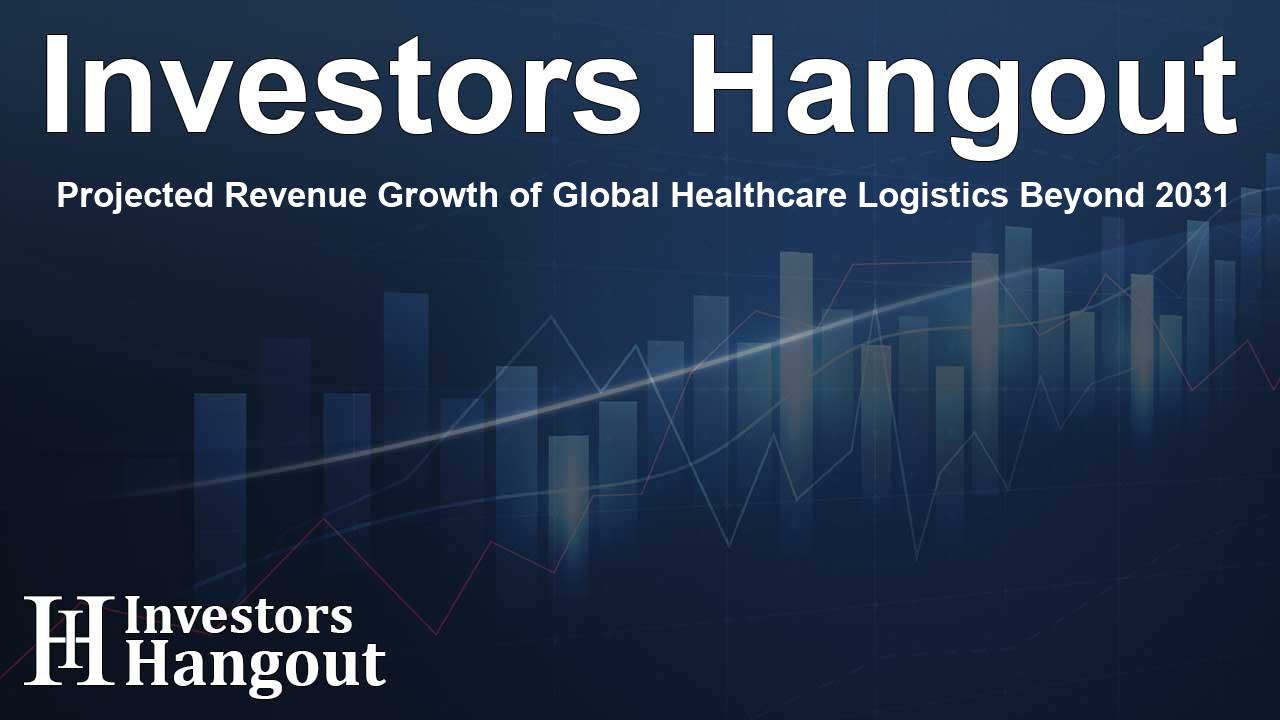Projected Revenue Growth of Global Healthcare Logistics Beyond 2031

Overview of the Global Healthcare Logistics Market
The healthcare logistics sector is undergoing a remarkable transformation, driven by a surge in demand for timely and efficient transportation of medical goods. Recent studies indicate that the market, valued at USD 84.88 billion in 2024, is projected to reach an astounding USD 179.31 billion by 2031, growing at a remarkable compound annual growth rate (CAGR) of 9.68%.
Key Factors Driving Market Growth
One of the most significant drivers of this growth is the increasing demand for temperature-sensitive pharmaceuticals. With the rapid development of biologics, vaccines, and tailored medications requiring precise temperature control, the healthcare logistics market is adapting by investing heavily in enhanced cold chain logistics. This expansion necessitates third-party logistics (3PL) providers to bolster their infrastructure and implement advanced cold chain management software, ensuring that the integrity and effectiveness of these crucial products are maintained.
Technological Innovations in Logistics
Moreover, advancements in technology are reshaping the logistics landscape. The integration of Internet of Things (IoT) devices, GPS-enabled RFID tags, and blockchain systems allow logistics providers to offer real-time shipment tracking. These innovations not only improve inventory management but also enhance the overall authenticity of deliveries, thereby minimizing spoilage and compliance-related risks.
Home Healthcare and E-Pharmacy Trends
The healthcare model is transitioning from traditional hospital-centric approaches to more decentralized home healthcare and e-pharmacy services. This shift is fueled by aging populations and the rise of telemedicine, significantly enhancing the demand for reliable logistics solutions capable of delivering prescriptions, diagnostic kits, and medical devices directly to consumers’ homes.
Challenges in Healthcare Logistics
Despite the increasingly favorable market prospects, challenges remain. Regulatory compliance stands as a significant hurdle; logistics companies must adhere to strict FDA guidelines, Good Distribution Practices (GDP), and various international standards. These requirements necessitate thorough documentation and stringent procedures, which can prolong time-to-market and increase operational costs.
Investment and Operational Costs
The financial commitment to maintain healthcare logistics can be prohibitive. Investments in temperature-controlled facilities, specialized vehicles, and training are essential but can lead to narrow profit margins, particularly in cases of emergency deliveries or low-volume shipments. These costs pose barriers to entry for smaller companies and can stifle the growth of existing participants in the market.
Workforce Challenges
A skilled workforce is critical for managing sensitive healthcare products. Unfortunately, the industry faces a shortage of qualified personnel in specialized areas, including regulatory compliance and cold chain handling. This talent gap hampers the overall service delivery and increases the risks associated with managing high-value shipments.
Regional Insights
Geographically, North America leads the healthcare logistics market, attributed to its advanced healthcare infrastructure and robust regulatory framework. The region’s strong pharmaceutical manufacturing base and the increasing demand for high-value biologics provide substantial revenue opportunities. The continued investment in digital logistics further propels the growth of the sector.
Prominent Market Players
The global healthcare logistics landscape is characterized by several key players, including significant names such as Deutsche Post DHL, Kuehne + Nagel, UPS (Marken), and FedEx. These companies play vital roles in delivering innovative and efficient logistics solutions to meet the heightening demands of the healthcare sector.
Conclusion
As we look toward the future, the global healthcare logistics market is poised for extensive growth and innovation. With an eye on technological advancements and the shifting dynamics of healthcare delivery, companies within this space must adapt to sustainably harness these emerging opportunities while navigating the complex challenges that lie ahead.
Frequently Asked Questions
What is the growth rate of the healthcare logistics market?
The healthcare logistics market is expected to grow at a CAGR of 9.68% from 2024 to 2031.
What are the key drivers for the expansion of the healthcare logistics market?
Key drivers include increasing demand for temperature-sensitive pharmaceuticals, advancements in technology, and the growth of home healthcare services and e-pharmacies.
Which region leads the healthcare logistics market?
North America leads the market due to its advanced healthcare infrastructure and significant pharmaceutical production.
What challenges does the healthcare logistics market face?
Challenges include stringent regulatory compliance, high operational costs, and a shortage of skilled workforce in logistics.
Who are the major players in the healthcare logistics sector?
Key players include Deutsche Post DHL, Kuehne + Nagel, UPS (Marken), and FedEx, among others.
About The Author
Contact Kelly Martin privately here. Or send an email with ATTN: Kelly Martin as the subject to contact@investorshangout.com.
About Investors Hangout
Investors Hangout is a leading online stock forum for financial discussion and learning, offering a wide range of free tools and resources. It draws in traders of all levels, who exchange market knowledge, investigate trading tactics, and keep an eye on industry developments in real time. Featuring financial articles, stock message boards, quotes, charts, company profiles, and live news updates. Through cooperative learning and a wealth of informational resources, it helps users from novices creating their first portfolios to experts honing their techniques. Join Investors Hangout today: https://investorshangout.com/
The content of this article is based on factual, publicly available information and does not represent legal, financial, or investment advice. Investors Hangout does not offer financial advice, and the author is not a licensed financial advisor. Consult a qualified advisor before making any financial or investment decisions based on this article. This article should not be considered advice to purchase, sell, or hold any securities or other investments. If any of the material provided here is inaccurate, please contact us for corrections.
